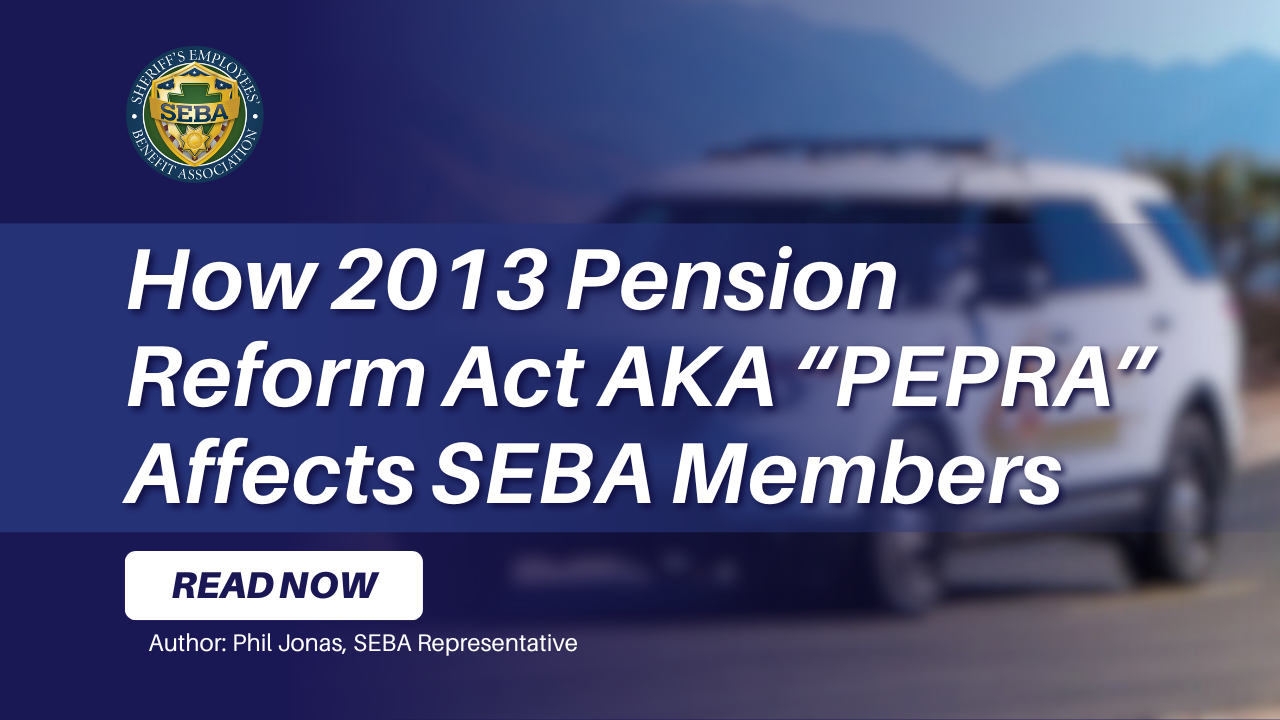How 2013 Pension Reform aka “PEPRA” Affects SEBA Members
In 2013, California enacted Assembly Bill 340, which significantly changed pension benefits and contributions for most public employees in the state. This law created the California Public Employees’ Pension Reform Act (PEPRA) and also modified existing laws governing the State Teachers’ Retirement System (STRS), the Public Employees’ Retirement System (CalPERS), and the County Employees Retirement Law of 1937.
PEPRA applies broadly to nearly all state and local public retirement systems and their employers. The University of California Retirement System and locally chartered independent retirement systems (like the City of Los Angeles system) are exempt. While all charter cities and counties are technically excluded, those that contract with CalPERS for retirement benefits, or charter counties with a 1937 Act retirement system, are still subject to PEPRA’s provisions related to those contracts or systems.
San Bernardino County and its retirement system (SBCERA) operate under the 1937 Act, making them subject to PEPRA. The most impactful change for SEBA members concerns retirement formulas:
General Members (hired on or after January 1, 2013 - Tier 2): The formula is 2% of salary at age 62, with a maximum benefit of 2.5% at age 67.
Safety Members (hired on or after January 1, 2013 - Tier 2): PEPRA offered three formula options. The default option is the one closest to, but lower than, the existing benefit formula at age 55. Since SBCERA’s pre-PEPRA formula was 3% at 50, the applicable formula is 2.7% at 57.
It's important to note that returning to a 3% at 50 formula for safety members cannot be achieved solely through labor negotiations (MOU). Changing these retirement formulas requires new legislation. SEBA, in conjunction with allied law enforcement and fire unions, is seeking legislative solutions to mitigate the adverse effects of PEPRA.

